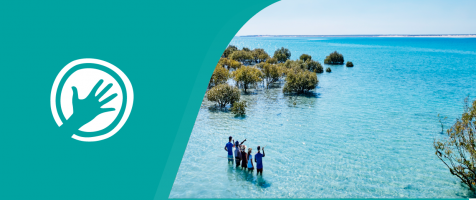The Closing the Gap report 2020 identified that the target to close the life expectancy gap between Indigenous and non-Indigenous people by 2031 is not on track, with WA recording the largest gap of all jurisdictions for males, at 13.4 years.
In 2018, the child mortality rate for Indigenous children was 141 per 100,000, which is twice the rate for non-Indigenous children.
The employment rate for Indigenous Australians was around 49%, compared to 79% for non-Indigenous Australians.
Strategic justification
Despite efforts, a significant gap still exists between the life outcomes (such as education, child mortality, employment and life expectancy) of Aboriginal and non-Aboriginal people, and our existing systems are not serving Aboriginal people as well as they could. Issues are many and complex, and it will take significant engagement, effort and time to bring about real change and achieve better outcomes. A new approach is needed to deliver improved life outcomes – one that places culture at the heart, embraces inclusive and genuine partnerships, and structurally changes the way government works with Aboriginal and Torres Strait Islander people.
Sector challenges and opportunities
Historically, WA’s infrastructure planning and delivery approach has been shaped around Western ideals and standards and has not always included early, genuine and culturally appropriate engagement with Aboriginal people.
This has resulted in assets that Aboriginal people do not connect with and are not fit for purpose. A significant shift is required to embed a genuine process of co-design across the full infrastructure lifecycle that embraces self-determination and empowerment of Traditional Owners, Custodians and their communities.
Although there have been significant achievements by individual state government agencies to date, many have not met current Aboriginal Procurement Policy targets and will have to work harder to engage with the Aboriginal business sector. Lifting awareness among state agencies and government trading enterprises about the capacity, capabilities and breadth of services available from Aboriginal businesses is an important challenge.
Poor living conditions and environmental health in some remote Aboriginal communities and town-based reserves contribute to higher rates of infection, injury and chronic disease and low community amenity and perceptions, impacting on wellbeing and participation. There is an urgent need to improve infrastructure in many of these communities. A lack of a sustainable funding model, limitations in governance, unlicensed and unregulated essential services, unclear roles and responsibilities in the provision of municipal assets and services, and a disparate approach to the maintenance of state-managed infrastructure presents a complex challenge within these communities.
Infrastructure planning, design, delivery, operation and maintenance offers a range of opportunities for Aboriginal empowerment and self-determination to improve outcomes for Aboriginal people and increase the sustainability and resilience of their communities.
Economic participation provides a strong foundation to realise better social, economic, health and cultural outcomes. There are opportunities – which should be Aboriginal-led and informed – across many areas of government activity to increase Aboriginal employment and procurement, and support the establishment, growth and sustainability of Aboriginal businesses.
Case study
Gnarla Biddi (Our Pathways) provides a Noongar-led guide and framework for Aboriginal engagement and participation on the METRONET program of works. The focus is on long-term, consistent and genuine engagement with the Aboriginal community, throughout the planning, design and operational phases of each project. The framework of 5 engagement streams puts cultural, business, job and land access outcomes for the Aboriginal community at the centre. For further information, refer to: https://metronet.wa.gov.au/strategies/gnarla-biddi

